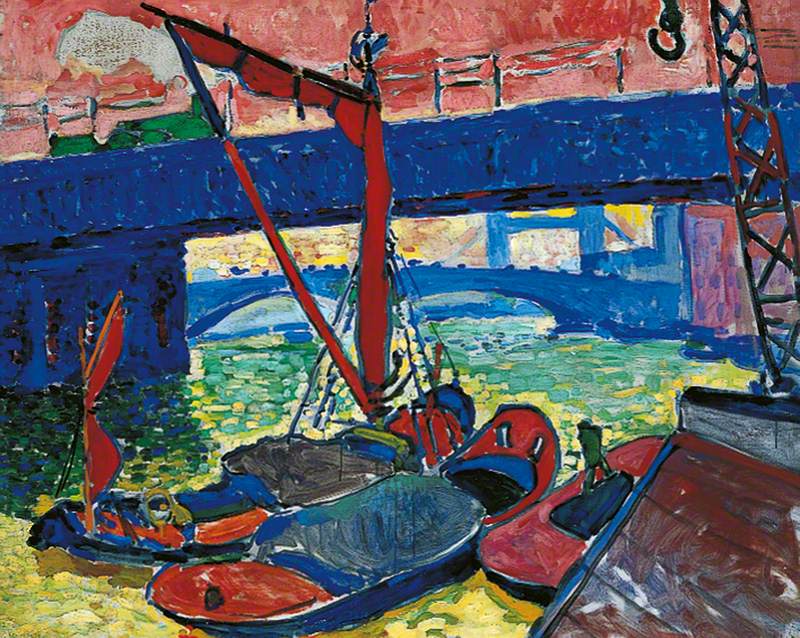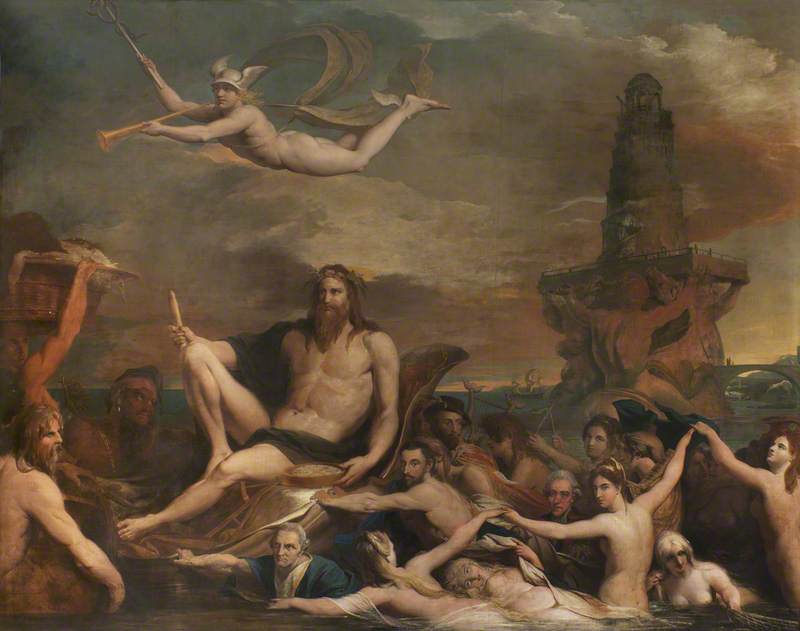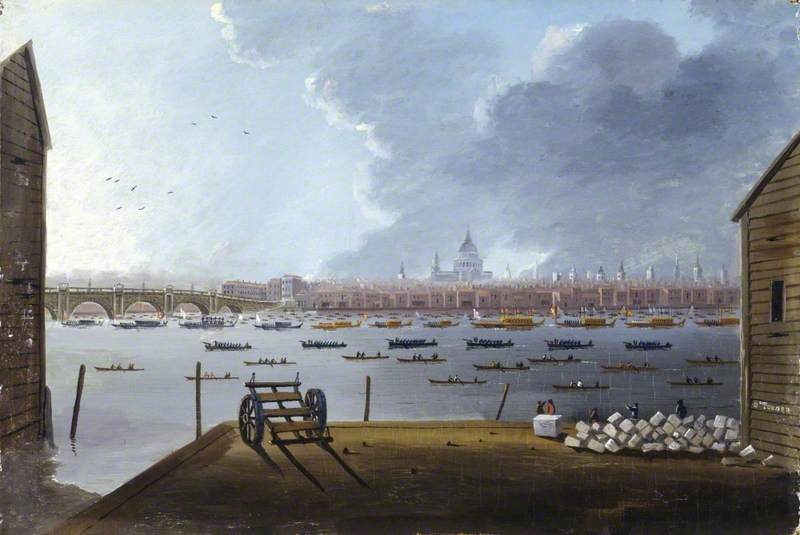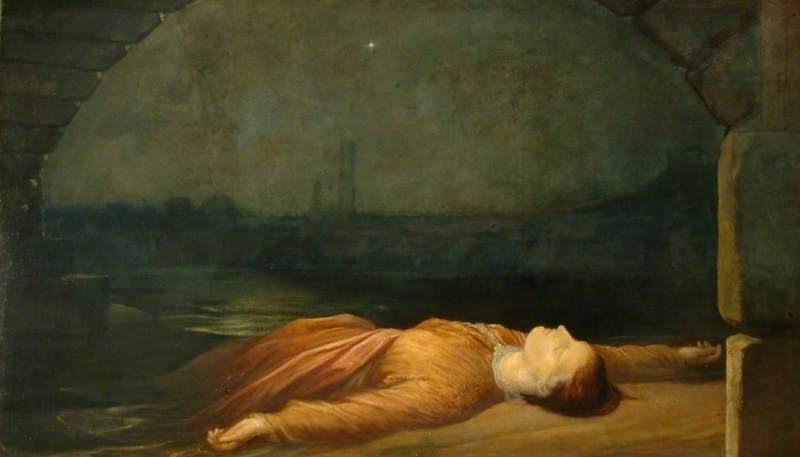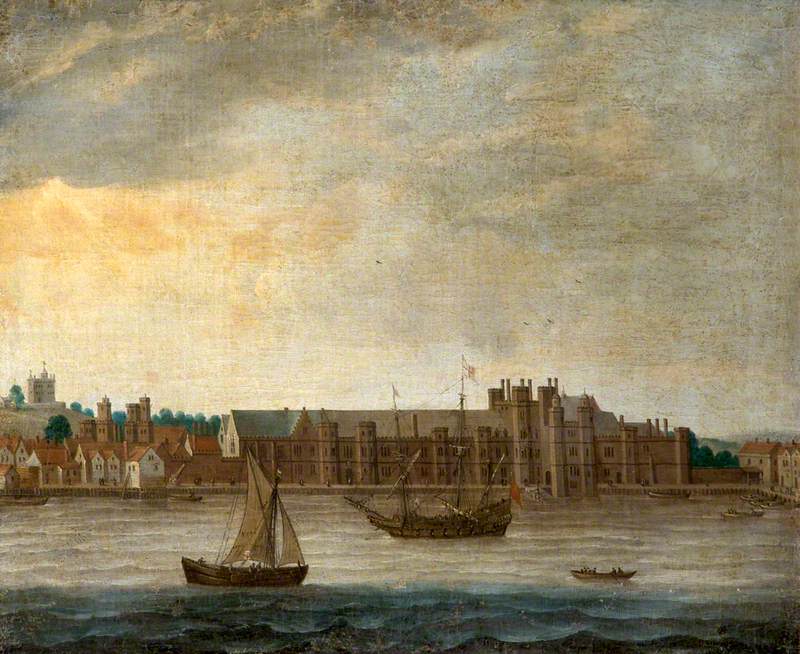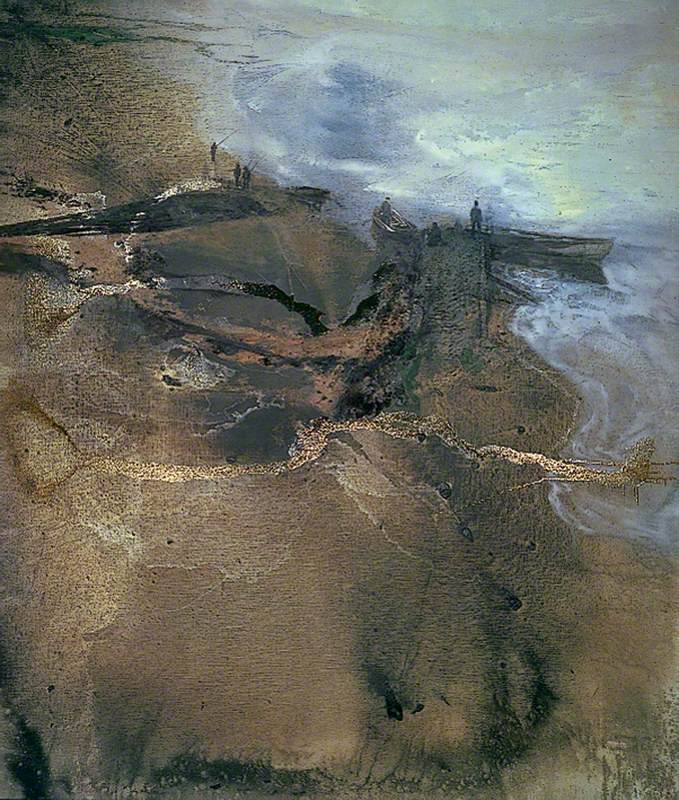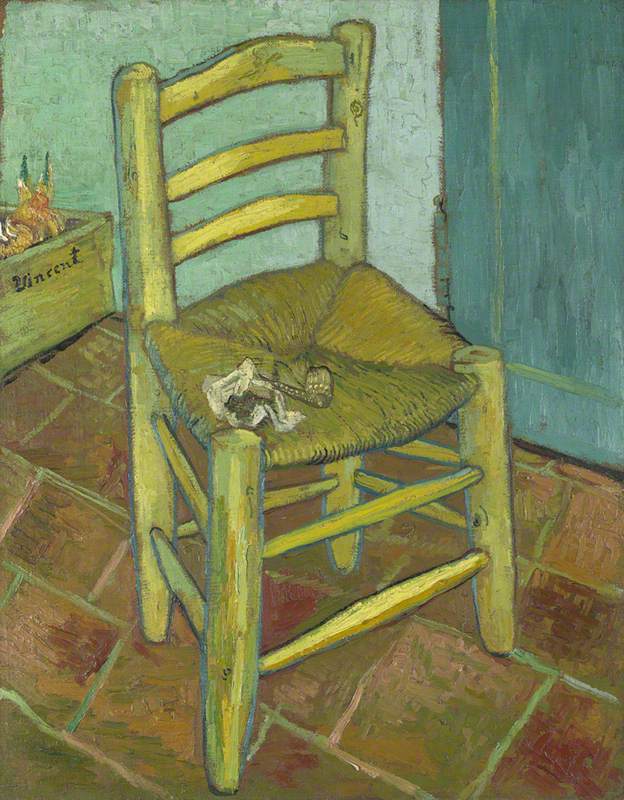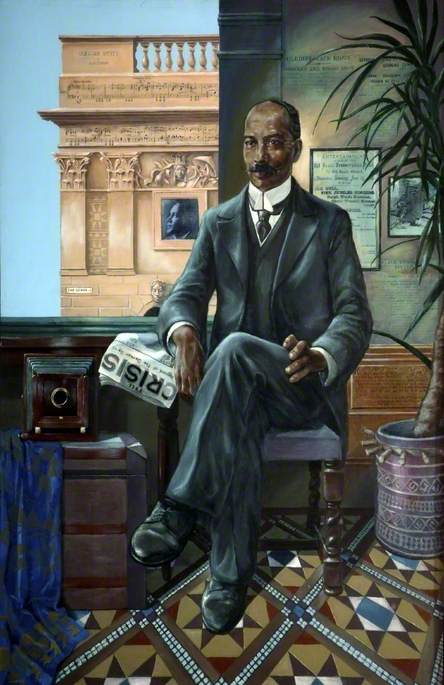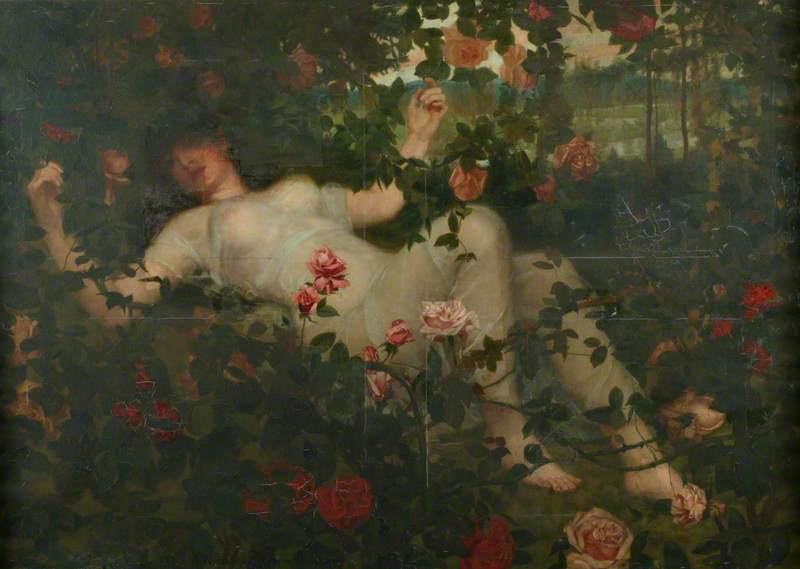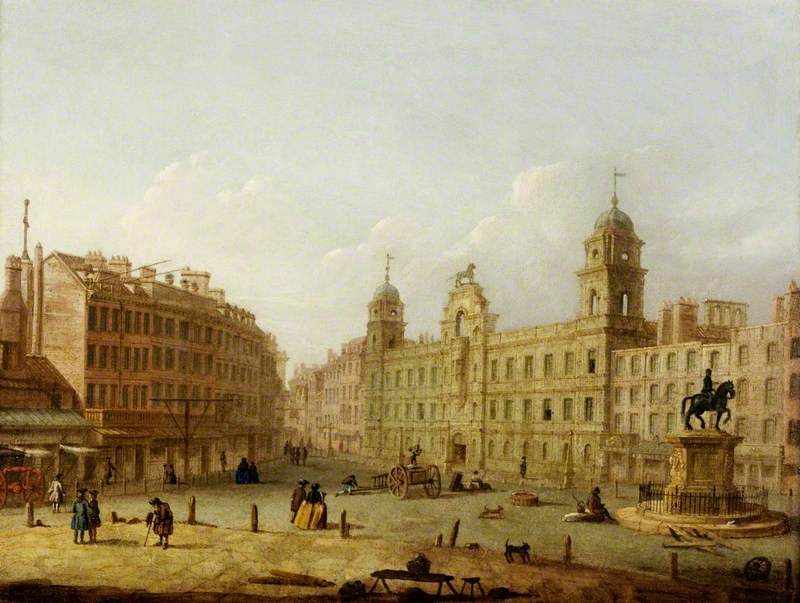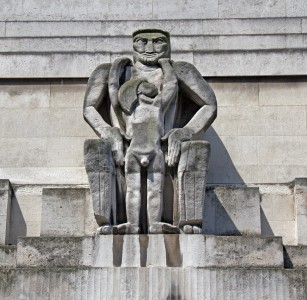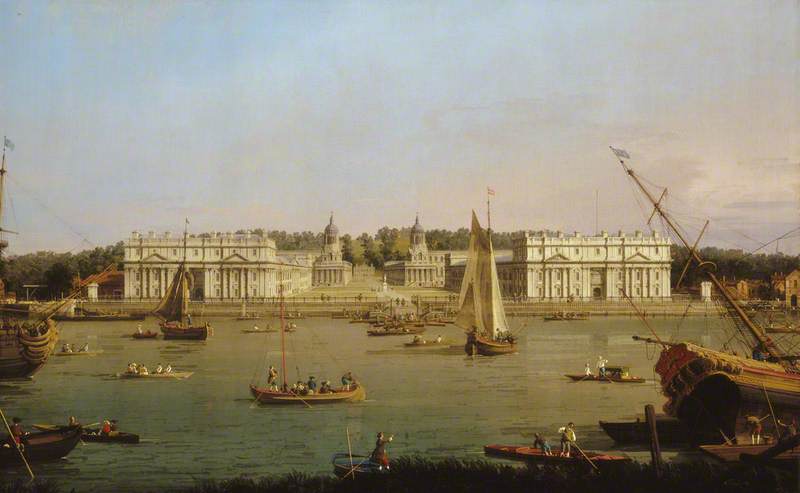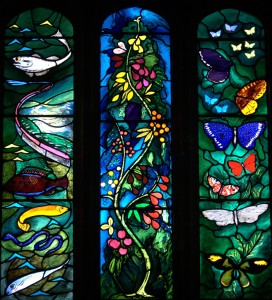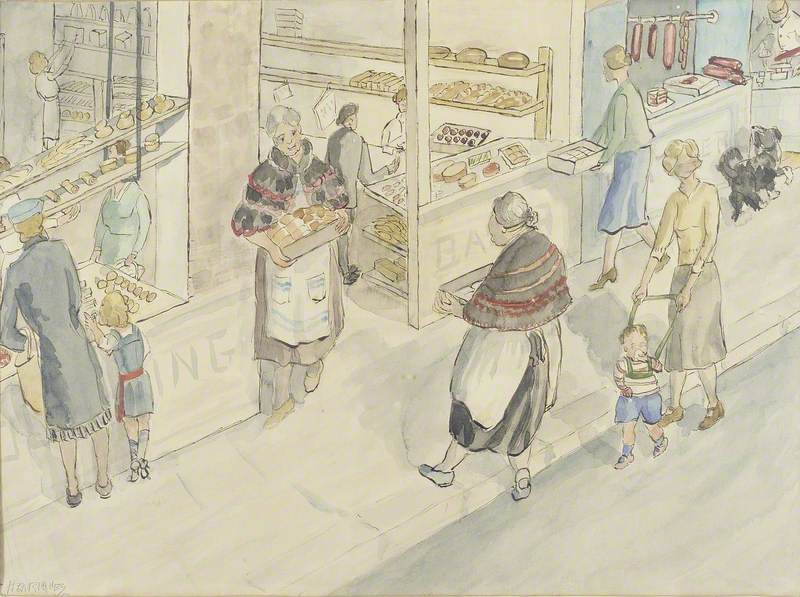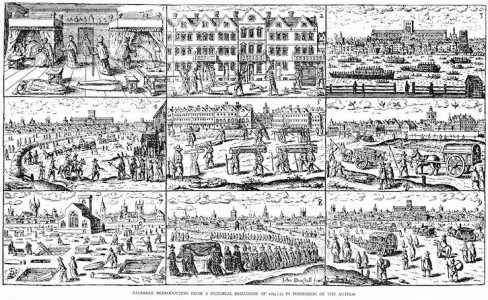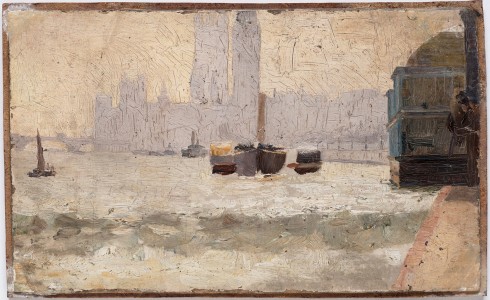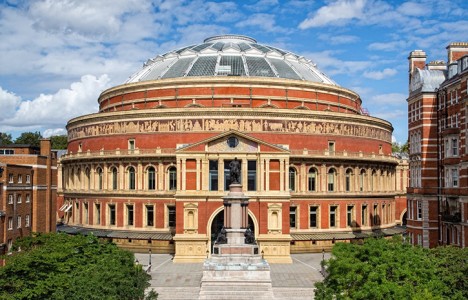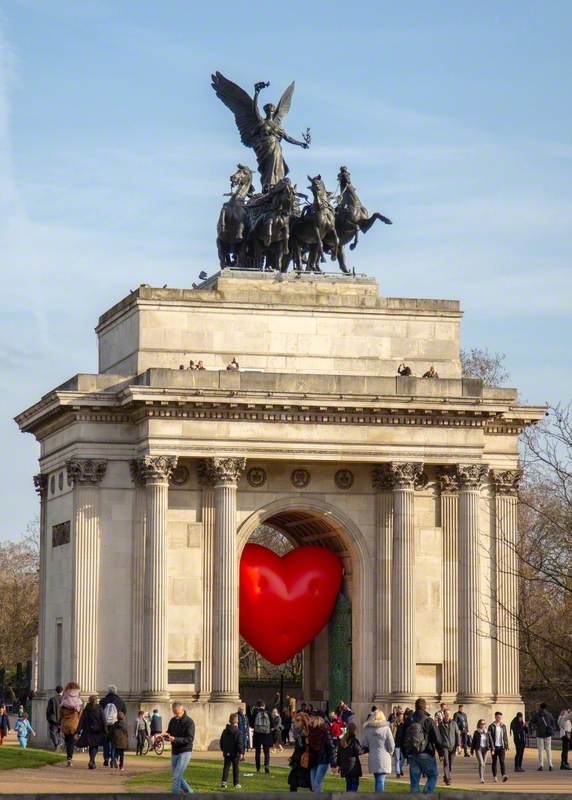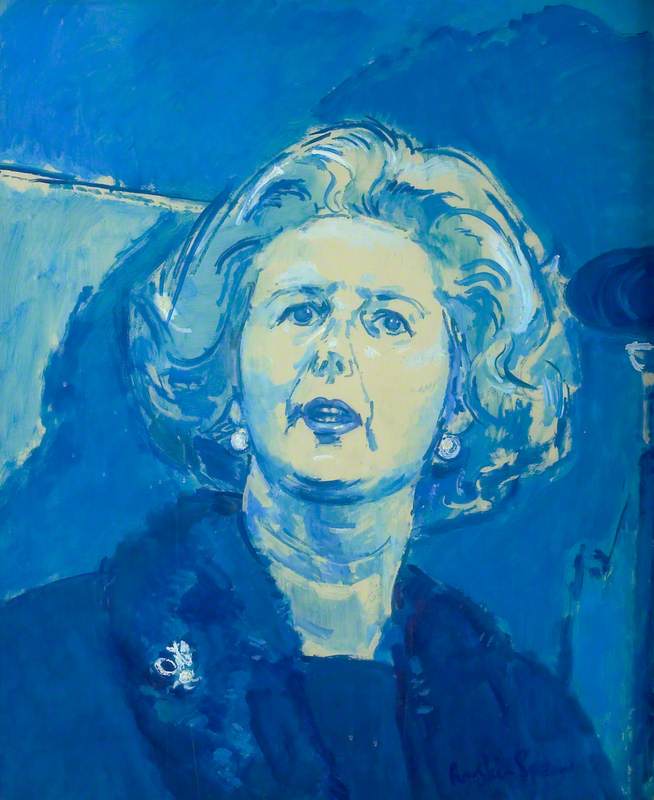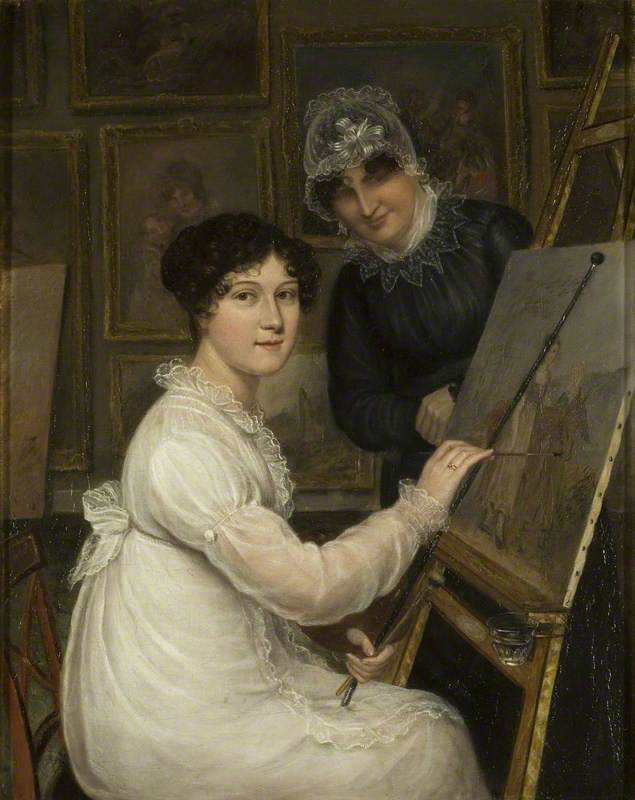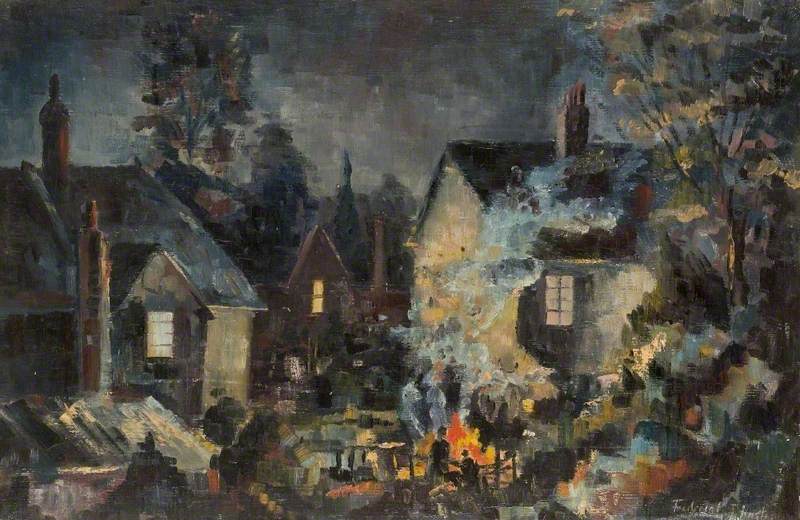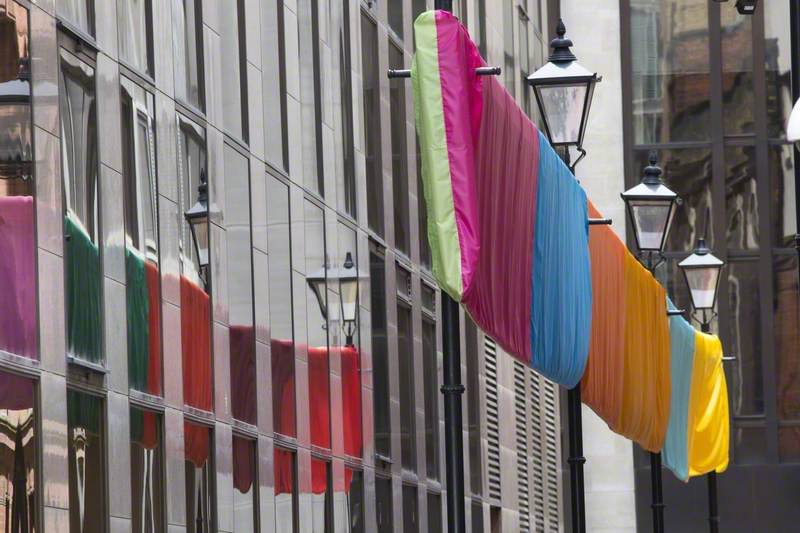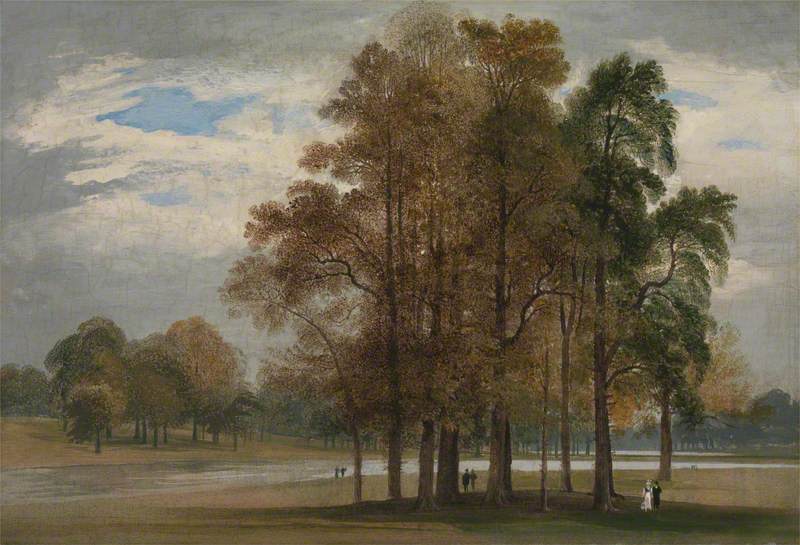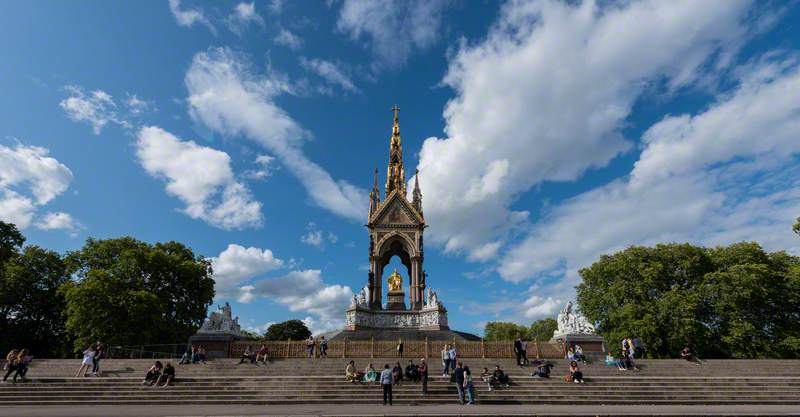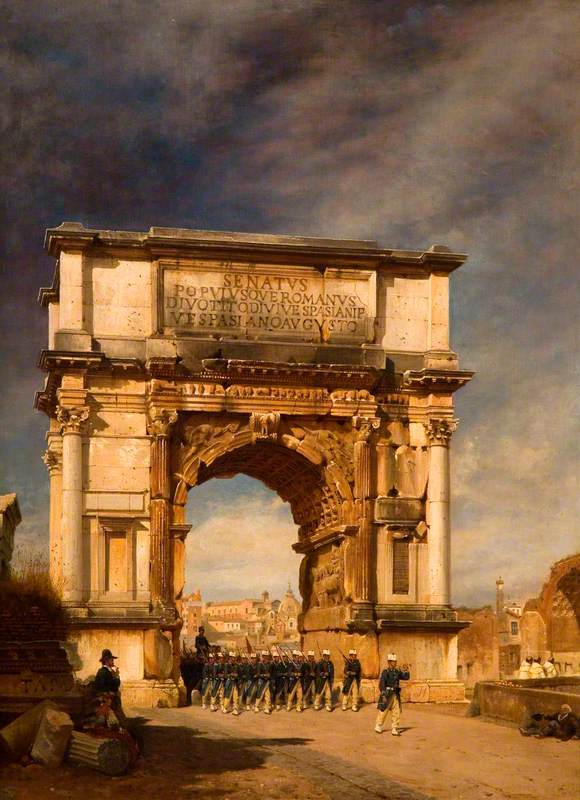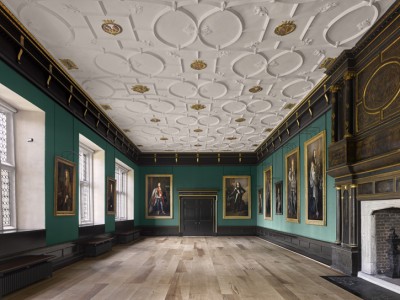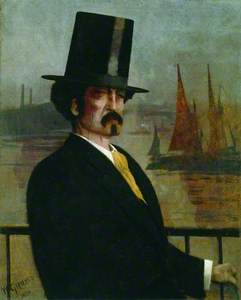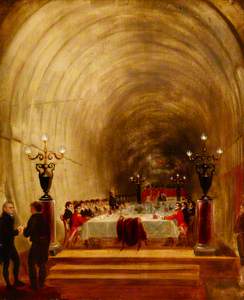Carving a meandering path through the heart of the capital, the Thames has provided rich visual inspiration to artists across different periods. From a fifteenth-century manuscript of poetry, through to romanticism, impressionism and contemporary art, each work provides the viewer with a glimpse into the cultural history of Britain's most famous river.
The Tower of London and the Thames from 'Poems of Charles, Duke of Orleans'
c.1500, from the manuscript 'Royal 16 F.II, f.73' by British (English) School 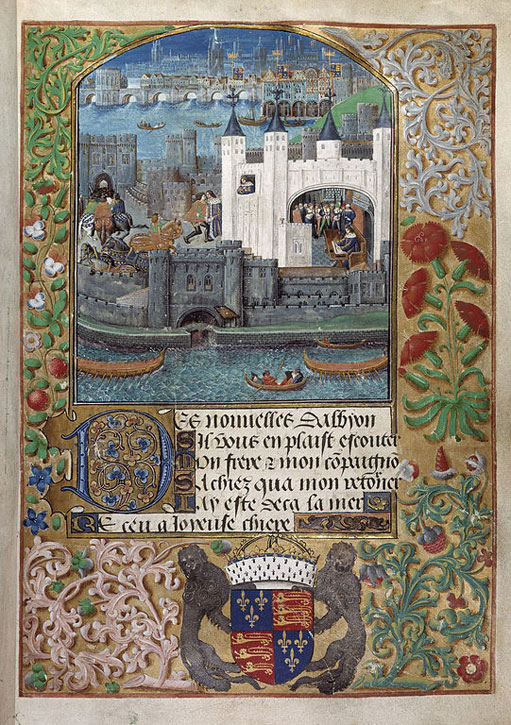
Believed to be the earliest known surviving depiction of the Thames, the azure hues of this manuscript reflect the wealth and opulence of the manuscript's patron, Charles, Duke of Orleans. The extraordinary image is perhaps one of the earliest known of medieval London, with its accurate topography making it of particular historical interest.
Now in the collection of the British Library, the illuminated images acted as backdrops to the collected poems of Charles as well as accompanying the verses of Des Nouvelles d'Albyon (News from England). The image, highlighted by an impressive use of gold, shows Charles hunched and writing in his room at the Tower of London following his capture at the Battle of Agincourt in 1415. Spending some of his 25 years in London locked in the confines of the Tower, the bright blue of the River Thames as it flows around the white walls of the tower couldn't be a more romantic glimpse of the freedom on offer outside of Charles' barred tower window.
But what did the Thames mean back then? Suggested from its inclusion in the manuscript, the Thames offered more than just a lustrous visual. Snaking round Traitors' Gate, the Thames provided a barrier of security that few would try breach. Acting as natural protection from the whimsy of plotting lords and foreign monarchs, the manuscript's depiction of the Thames wasn't only for decoration: it was also a warning.
Moving forward in time to one of the most famous scenes of London, we come to Wenceslaus Hollar's Long View.
The Long View of London from Bankside
1647, etching by Wenceslaus Hollar (1607–1677) 
This etching shows a view long gone – that of the capital before the Great Fire of 1666. Looking north from the south bank, you can see old St Paul's Cathedral and the maze of medieval streets.
The Long View of London from Bankside (detail showing old St Paul's Cathedral)
1647, etching by Wenceslaus Hollar (1607–1677) 
But in the foreground, dominating the scene is the ever-present river, with its solitary bridge. The first London Bridge was built by the Romans in around AD 50. Various wooden crossings were built and rebuilt over the next thousand years or so. The one in this image is the stone medieval construction that existed until the 1830s. This was itself rebuilt as a stone arch bridge and then sold off in the 1960s, replaced by the current modern London Bridge, opened by the Queen in 1973.
As England modernised, so did its art, with the manuscripts and etchings replaced with an idealised, Romantic style of painting in the eighteenth century. Arriving in London many Dutch and French artists flocked to the Thames and its bridges.
Philip James de Loutherbourg settled in London in 1771, becoming a set designer for the Garrick Theatre and receiving admiration from the likes of Joshua Reynolds. As well as treading the boards (or painting them, at least), de Loutherbourg also turned his gaze to his new surroundings, depicting on canvas London scenes that were designed to inspire, terrify and seduce. Tragedies such as the Great Fire of London captured the imagination of many artists. The contrast of light and dark, horror and beauty, safety and peril made fertile ground for artistic and poetic interpretation.
The Great Fire of London
c.1797
Philip James de Loutherbourg (1740–1812) 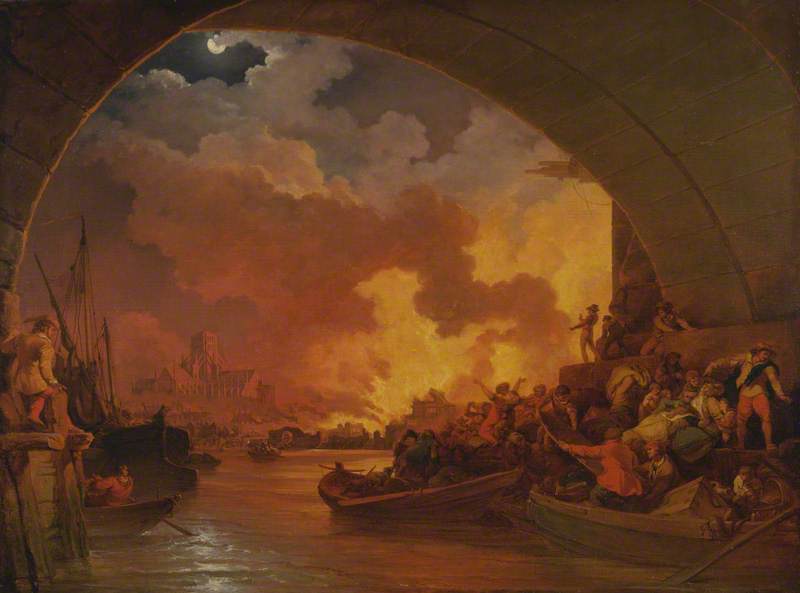
In de Loutherbourg's 1797 depiction of the Great Fire, the waters of the Thames and the protective archways of old London Bridge provide shelter to Londoners attempting to escape the violent flames. Against a ruby-red apocalyptic landscape, the Thames acts as a refuge, guiding those away from the fire and offering sanctuary.
Yet the Thames was not always seen as a site for the good and noble. As the river docks became synonymous with industry, vice and a dark kind of glamour, artists were drawn to the seedy underbelly that encircled the banks of the river.
Artist James Abbott McNeill Whistler took his easel to outcast corners of the Thames, depicting the people that smoked, drank and sold their wares. For Whistler, a well-educated upper-middle-class young painter from the United States, it wasn't the lights and wealth of the bourgeoisie he wanted to depict, but every day working people, and for good reason. The industrialisation of London brought about great social change and artists were keen to experiment.
Wapping
1860–1864, oil on canvas by James Abbott McNeill Whistler (1834–1903) 
In Whistler’s Wapping (1880), two men speak casually in the Angel Inn, overlooking the south bank of the Thames as their female companion stretches herself across the bannister as if in boredom. Is this a day-to-day scene or are we viewing something out of the ordinary, something more sinister?
Nocturne: Blue and Gold - Old Battersea Bridge
c.1872–5
James Abbott McNeill Whistler (1834–1903) 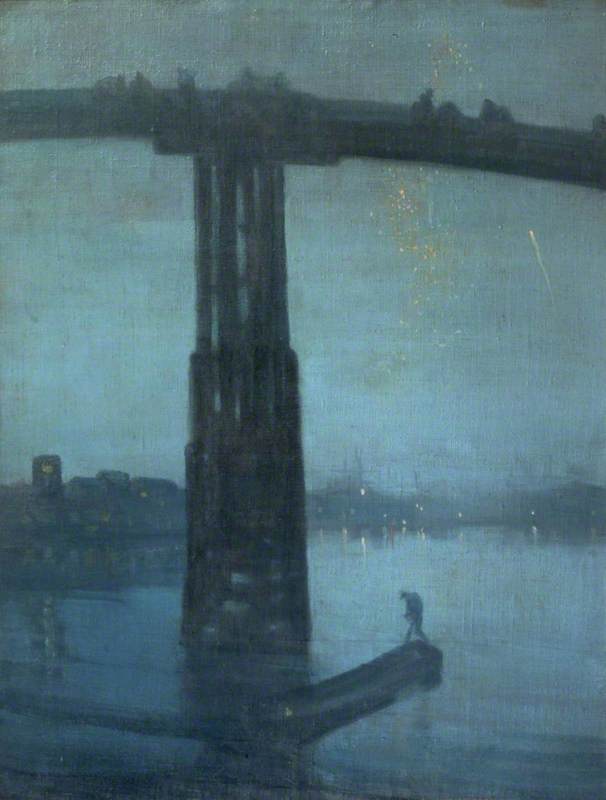
The Thames also became the backdrop for a war of styles. Whistler's Nocturne: Blue and Gold – Old Battersea Bridge was decried for 'flinging a pot of paint in the public's face' by prominent art critic and writer John Ruskin. Whistler's Nocturnes, often depicting the Thames at night, were characterised by their use of dark colour and transparent blurred layers of paint. Inspired by the Japanese woodcuts of Hiroshige, Whistler's work battled against tradition, working in stylistic contrast to the likes of John Atkinson Grimshaw and his The Thames by Moonlight with Southwark Bridge.
The Thames by Moonlight with Southwark Bridge, London
1884
John Atkinson Grimshaw (1836–1893) 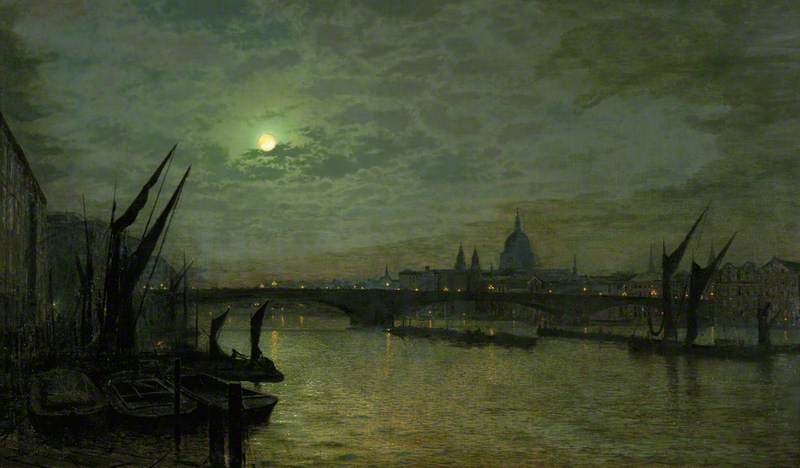
This notable artwork is now on show in London's Guildhall Art Gallery in 'Illuminated River', a new display running alongside 'Architecture of London', the gallery's summer show. In comparison to Whistler, Grimshaw's Thames retains the romance of earlier artists and caters to an idyllic vision of the river in the moonlight. In spite of their difference in style, the two artists were close, with both holding each other's evocation of the river in high regard.
Over a century on from Whistler's death, the Thames retains its allure to contemporary artists. The public nature of the Thames and its bridges and its role as a transport vessel through London has sculpted a new artistic vision for these architectural monuments in keeping with modern living. With the advantageous use of new technology, artist Leo Villareal – in collaboration with architects Lifschutz Davidson Sandilands – is taking inspiration from London's bridges as well as the art-historical legacy of the Thames.
Overview of 'Illuminated River'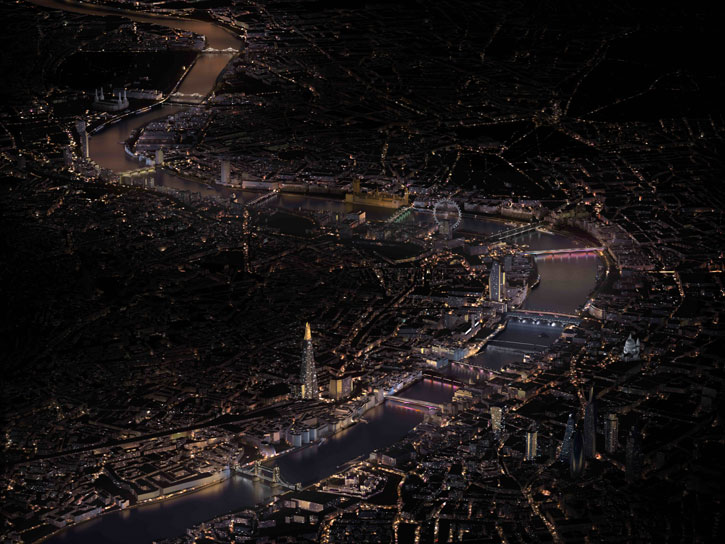
Creating an artwork that spans across up to 15 central London bridges, Illuminated River will bathe the bridges in soft light, creating a unifying artwork that celebrates their role and history. Lighting up the first four bridges – London, Cannon Street, Southwark and Millennium – this summer and lasting at least ten years, Villareal's new vision for these central London bridges looks to insert itself into an art historical lineage that goes back centuries and celebrates that most iconic of waterways, the River Thames.
Elise Bell, arts writer and commentator
The Illuminated River display runs from 31st May to 1st September 2019 alongside Guildhall Art Gallery's exhibition 'Architecture of London' which runs from 31st May to 1st December 2019

